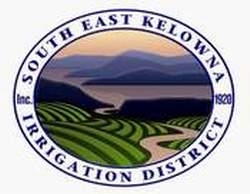The new Water Sustainability Act was introduced as Bill 18 in the BC legislature on Tuesday the 11th of March. The act implements many of the ideas that were described in the Water Sustainability Act Legislative Proposal circulated in 2013. The proposal allowed four weeks for responses, and from those responses the government has selected water pricing as that topic which requires more discussion. To that end the government has released a brief discussion paper about water pricing, and is allowing four weeks for comment.
The discussion paper is four pages long, with two pages of this providing background. The document does not provide any suggestions. Rather, it sets out seven principles that are said to inform water pricing. They are:
- Simplicity,
- Fairness and Equity,
- Implications for Water Users,
- Impact on the Water Resource,
- Cost Recovery,
- Efficiency, and
- Food Security and Public Health.
These are certainly important principles. Some of these principles are not perfectly compatible with others. The appeal for input from the public specifically asks for direction about what is most important to the people of British Columbia when it comes to pricing water. Any pricing plan we come up with will be a balancing act between these principles, a balancing act that likely leaves many people unsatisfied.
I think that the discussion paper and these seven principles provide some insight into what the government is looking to accomplish with this exercise. I think that the top three points are not in their position by accident. The government does not want to burden water users with complicated new regulations, or introduce prices and rules that substantially change the economic position of water users. The supporting text for the fifth principle suggests that there is little apatite for pricing that generates more revenue than necessary to cover costs. In essence, this consultation appears to say to water users that the government expects water users to bear the extra costs involved with the new act, but no more. It will rely on regulation to take care of the environment.
It is also important to bear in mind that the price the government is talking about is not the price we pay to our water provider or for bottled water in the grocery store. It is about fees and rentals that are in the background, paid by water licence holders. Ranchers, water bottlers, resource extractors, etc. who hold licences will pay these prices. Those that can will pass them on to consumers. However, the impact on consumers will be small, even for substantial increases in these fees and rental rates. These rates have also historically been based on the size of the licence, not the actual volume used.
Prices are powerful tools for influencing behavior. High prices encourage people to look for alternatives. Low prices encourage increased use. Why did we go from a focus on fuel efficient vehicles in the 70’s to power, size and comfort (esp. SUVs) in the 90’s? From the 70’s to the 90’s incomes were rising faster than the price of fuel. What happened when fuel prices rose? Fuel efficiency suddenly became an important criteria and SUV sales fell as a share of total vehicle sales.
It works for water too. Many cities that have moved from flat rate pricing to volume based pricing for water have seen water use decline. However, for water, people become very concerned when prices rise. Water pricing is one of the few things that can bring a community together. In 1975 Tucson city council was planning to substantially increase water rates, to deal with crumbling infrastructure (Tucson Weekly, 1997). A successful recall campaign was soon launched. In 2012 a petition of South East Kelowna Irrigation District (SEKID) ratepayers defeated a proposal to borrow $15 million to fund system upgrades. In both cases, water rates were not the only issue. However, in both cases water rate increases that were small relative to total household expenditures were sufficient to unite a community in opposition.
Prices, while unpopular, are effective tools for influencing water use. Can they be fully used, in the face of the political opposition? Should they be used, in spite of this opposition? To answer this question, we need to consider the impact of using prices.
If price was the only tool we used to manage water demand, then where water is scarce and when water is scarce, the price must go up. When the price goes up, use goes down. Sounds good, but …
Utilities, businesses and households have many expenses that don’t change in lock step with water scarcity. Utilities need sufficient revenues to cover these fixed costs. Businesses are in the business of managing risk. Making water prices more volatile increases risk. Households likewise try to plan their expenditures, and if the water price is changing significantly month to month, household budgeting is harder. Having a fixed water price and a guaranteed volume of water available makes our lives comfortable and predictable.
Have we grown too comfortable? Should our lives be less comfortable so that we are more exposed to the reality of water scarcity? Maybe. However, there is one other challenge with using price to manage use: it doesn’t precisely control actual use. Both the demand for water and the actual yield of water are moving targets. In the face of these moving targets, it takes time to adjust the water price and to communicate the changed water price to water users. Given this inertia in the system, it is quite likely that the price chosen will miss the target. We will often either set the price too high, leading to unnecessary hardship for water users, or have it too low, such that use is high and environmental damages occur.
Since price is not a precise tool for managing use, it makes sense to have some hard quantity controls. Thus, things like minimum stream flows. Using prices also means that those who are more able to pay can use more water. Most of us are not comfortable with this, so we make domestic use a priority and look for some way to make at least a basic volume of water affordable by all. Likewise, some types of water use, such as irrigation, are important for making our communities livable and landscapes attractive. Since most of us won’t pay much extra to buy local food, we give farmers a break on the price of water. We then end up with a hybrid system which uses prices for some things and quantity regulations for other things.
So what should the government do when it comes to water pricing? The pricing it is talking about won’t really influence final water use much. Is there then any reason for having a price higher than the cost of implementing the provisions of the Water Sustainability Act? Maybe not. Maybe what is important is ensuring that there are enough revenues to adequately cover the costs of monitoring and enforcement in the act. How do we make sure that the government doesn’t give in to the temptation to reduce these charges to favour certain groups? Perhaps the water pricing question should be as much about ensuring that revenues collected are directed towards ensuring sustainable water use, and that rates can be adjusted down or up as necessary to ensure that these functions are maintained. Perhaps we need an arms length water management agency that has a clearly defined mandate to ensure sustainable water management in British Columbia, and the tools to raise the revenues necessary to fulfill this mandate.
Should we be thinking outside the pricing box that has been put before us?





 Follow
Follow
‘Perhaps we need an arms length water management agency that has a clearly defined mandate to ensure sustainable water management in British Columbia, and the tools to raise the revenues necessary to fulfill this mandate.’
In today’s world of hated taxes, decreasing public servants, increasing down-loading to the municipal levels with councilors (who are now elected for four years and have variable capacity to govern), an ‘arms length water management agency’ may seem like a wise decision. If one compares arms length efforts to run other programs in this province, such as the most recent Multi-Material BC (MMBC – set to be launched in May 2014), one would think otherwise. MMBC is dealing with the motherhood program of recycling. Thankfully the Canadian Federation of Independent Business has recently taken the lead in questioning the province in approving this seemingly benign model for recycling. There is much to be desired in this new recycling program approved by the BC Ministry of Environment back in April 2013.
Accountability, transparency, consultation and trust are required to make a truly Sustainable Water Act for the next one hundred years. Much more discussion needs to transpire before embracing any form of a new ‘modernized’ water pricing model. A deadline of April 8th, 2014 is too soon for proper consultation with the citizens of BC.
The provincial government must continue to govern our most precious resource. They alone must be accountable for any uses/misuse of water, accounting/non-accounting, allocations/over-allocations in the days ahead. It will require money, resources and resolve to manage water wisely. Please take the politics out of our new Water Sustainability Act and the regulations that go along with it.
Thanks for your comments John on this issue. Economist always have different ways of looking at issues and I appreciate your perspective. At this point in time we need more information on what type of model the government is leaning towards. Perhaps the ‘Polis Model’ has already been chosen where avoiding the contentious and unpleasant topics are minimized or left out altogether. Lets keep the conversation going and not submit to the easiest path offered. Maybe we will have to pay a little more of the hated taxes to ensure ‘Peace, Order and Good Governance’ in the year of 2014!